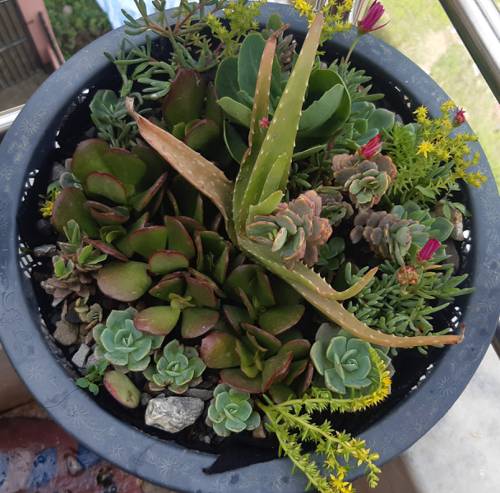
FAQ About Indoor Plant Symbiotic Microorganisms

What are symbiotic microorganisms in indoor plants?
Symbiotic microorganisms in indoor plants refer to bacteria and fungi that live in close association with plant roots or other parts. These microorganisms form mutually beneficial relationships with the plants, helping improve plant health, nutrient uptake, and resistance to diseases.

How do symbiotic microorganisms benefit indoor plants?
Symbiotic microorganisms benefit indoor plants by enhancing nutrient absorption, promoting growth, and increasing resistance to pests and diseases. For instance, mycorrhizal fungi extend the root system's reach, improving water and nutrient uptake, while beneficial bacteria can produce growth hormones and protect against harmful pathogens.

What are mycorrhizal fungi, and how do they assist indoor plants?
Mycorrhizal fungi form symbiotic relationships with plant roots, extending their network to increase the plant's access to water and nutrients, such as phosphorus. This relationship not only optimizes nutrient uptake but also enhances the plant's resistance to pathogens and environmental stresses.

Can indoor plants survive without symbiotic microorganisms?
While indoor plants can survive without symbiotic microorganisms, their growth, health, and resilience against diseases and environmental stresses can be significantly improved with these beneficial organisms. The presence of such microorganisms often results in healthier, more robust plant systems.

How can I introduce symbiotic microorganisms to my indoor plants?
You can introduce symbiotic microorganisms to your indoor plants by using commercially available inoculants containing beneficial bacteria and fungi. Additionally, using well-composted soil or adding mycorrhizal fungi during potting can naturally introduce these beneficial microbes to your plants.

Are there any risks associated with using symbiotic microorganisms on indoor plants?
Generally, using symbiotic microorganisms on indoor plants is safe and beneficial. However, it's essential to ensure that the microorganisms used are suitable for the specific plant species and environmental conditions. Overuse or incorrect application of certain microbial inoculants could potentially lead to imbalances, though this is rare.

What are some examples of symbiotic bacteria beneficial to indoor plants?
Examples of symbiotic bacteria beneficial to indoor plants include Rhizobium species, which can fix atmospheric nitrogen, and Bacillus species, known for their plant growth-promoting properties through producing hormones and protecting against pathogens.

Do symbiotic microorganisms affect the watering needs of indoor plants?
Yes, symbiotic microorganisms like mycorrhizal fungi can enhance the water retention capacity of plants, potentially reducing the frequency of watering needed. This results in plants that are more resilient during periods of drought or inconsistent watering.

Can symbiotic microorganisms help in controlling plant diseases indoors?
Symbiotic microorganisms can help control plant diseases by outcompeting harmful pathogens for space and resources. They can also trigger the plant's immune response to fend off infections, thus enhancing overall disease resistance.

How can I tell if my indoor plant has a healthy symbiotic microorganism community?
A healthy symbiotic microorganism community is often indicated by robust plant growth, vibrant leaves, and little to no signs of nutrient deficiencies or disease. Observing a healthy root system with signs of mycorrhizal associations can also be a positive indicator.

Can all indoor plants benefit from symbiotic microorganisms?
Most indoor plants can benefit from symbiotic microorganisms, although the extent may vary depending on the species and growing conditions. Certain plants, like orchids and ferns, have specific microbial partners that help them thrive, while others may gain general benefits from enhanced root health and nutrient uptake.

Are there specific symbiotic microorganisms for different types of indoor plants?
Yes, different types of plants may associate with specific microorganisms. For example, legumes prefer rhizobial bacteria for nitrogen fixation, while many other types of indoor plants may benefit from general mycorrhizal fungi and beneficial bacterial strains.

How do symbiotic microorganisms influence indoor plant growth rate?
Symbiotic microorganisms can significantly enhance plant growth rates by facilitating greater access to nutrients and water through expanded root systems and increased nutrient solubility. This improved efficiency supports faster and healthier plant development.

What is the role of rhizobacteria in indoor plant care?
Rhizobacteria, a group of root-associated bacteria, play a crucial role in plant care by promoting growth through nutrient solubilization, hormone production, and offering protection against soil-borne diseases. They are a valuable component of the plant's root microbiome.

Do fertilizers interact with symbiotic microorganisms in indoor plants?
Yes, fertilizers can interact with symbiotic microorganisms. Ideally, a balanced use of fertilizers can complement the action of these microorganisms by supplying essential nutrients that may not be adequately provided by the symbiosis alone. However, excessive use of chemical fertilizers may disrupt this beneficial microbial community.

How do beneficial fungi impact the soil quality for indoor plants?
Beneficial fungi improve soil quality by enhancing nutrient cycling, decomposing organic matter, and boosting soil structure. Their presence helps create a more hospitable environment for plant roots, which is crucial for the health of indoor plants.

What are the signs that symbiotic microorganisms aren't present in indoor plants?
The absence of symbiotic microorganisms can be suggested by slow plant growth, nutrient deficiencies (like yellowing leaves), higher susceptibility to diseases, and poor root development. Such signs could indicate an imbalanced or poor-quality soil environment.

Can I use probiotics intended for humans on indoor plants?
While probiotics for humans and plants share the concept of beneficial bacteria, they are specifically formulated for different environments. It's best to use probiotics or microbial products designed for plants to ensure compatibility and effectiveness.

What is the difference between endophytes and soil microorganisms?
Endophytes are microorganisms that live inside plant tissues without causing harm, often enhancing plant adaptability and stress resistance. In contrast, soil microorganisms primarily live in the soil, interacting with plant roots to assist in nutrient uptake and growth.
